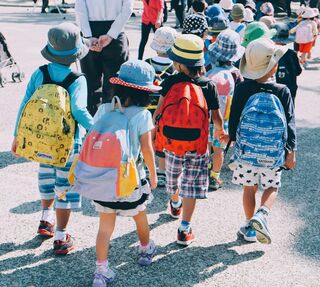Trauma
Vicarious Trauma From School Shootings
A Personal Perspective: A therapist's reflection on the Uvalde school shooting.
Posted June 7, 2022 Reviewed by Gary Drevitch

The news of the most recent school shooting in Uvalde, Texas, is devastating. The fact my last sentence has to include the phrase “most recent” is even more appalling.
While I have listened with deep empathy to people express their grief over what happened, I have not known what to write in a public forum. Words pale. How can I have an opinion when there are so many unknowns and complex variables?
I was a little girl living in Texas when I saw part of a news segment about a shooter at a store in another state. The story described historic shootings like the one that occurred at the University of Texas in Austin in 1966. That took place before I was born, yet I did not fully comprehend time and distance at my age; I just remember spotting some footage of the UT tower and becoming extremely frightened that going outside—or to school—could kill me. To my knowledge, this fear did not actually lead me to change my behavior, nor did I share my fears with anyone. No one knew what I saw or how I internalized it. But I can still recall the paralyzing fear—and I was not even there.
Today I know this is called vicarious trauma. I bring it up because children and parents worldwide are experiencing it as they encounter each gruesome new event on television, the radio, or the internet. The children who live through these events (in and out of the rooms where the shooting happens) are even more traumatized, leaving many to deal with a lifetime of post-traumatic stress disorder (PTSD) symptoms and health impacts.
PTSD and vicarious trauma can be triggered by a range of unrelated experiences—from a seemingly innocuous smell or thw color of a light, to a person’s look, tone of voice, or other echoes of the previously experienced traumatic event.
I remember sitting in a class setting for professional training on treating trauma when the instructor asked the class if we were under any threat at that moment. The students got quiet, and I suddenly became aware of how unsafe I felt. The instructor then tried to reassure us that we were not under any threat. But the more he insisted, the more I resisted and internally squirmed. Dozens of unsafe scenarios flooded my awareness, and I distrusted the instructor for his repeated assertions that everything was safe. This was in downtown Austin, not that far from the UT tower. That could have been the trigger. It could also have highlighted my sense that no one can truly guarantee someone else’s safety. It feels like professional arrogance (or plain old-fashioned arrogance), which brings me to my previous point about what can be known in school shootings.
In a study by Elsass et al. (2021) about moral panic and associated fears of crime and school shootings, the research team surveyed college students and found that people in the Southwest and West believed school shootings were higher and disproportionate. (Disproportionate should not relate to school shootings, as any school shooting is not okay.) The authors also shared other research maintaining that school shootings are statistically rare and that schools are still among the safest of places. Meanwhile, Luckett and Cangemi (2020) cite a Washington Post article reporting that deaths from school shootings exceeded those of military members deployed in the previous year. Those authors also cite research by David Paradice (2017), who found 558 direct injuries and 420 deaths over the 175 years of his research. According to Education Week, 2022 has already seen 27 school shooting deaths; 2021 had 34, 2020 had 10, and 2019 and 208 each had 24 shootings.
Several contributing factors appear to lead to school shootings. Some have pointed to shooters' mental health and the fact that many endured abuse and bullying. It is unknown if the bullying caused the retaliation or if anti-social and behavioral issues added to the person’s rejection. Still, bullying behavior is not okay, and school cultures that allow a climate of bullying may need to be explored. Research shows that people fare best when they have strong family and social support that is nurturing, available, and consistent, so cultivating healthy family and community connections can be another way of helping people thrive.
Additionally, media coverage may encourage narcissistic tendencies in shooters who seek attention while causing vicarious trauma in some and desensitization in others.
Unfortunately, there is rarely one single cause or perfect remedy; multiple complex issues contribute to school shootings. I can share that we are all impacted (vicariously or directly), so I hope that all of us can come together to keep children safe, loved, and protected.
References
Luckett, J. M., & Cangemi, J. P. (2020). Causes of school shootings: Is there a single factor? College Student Journal, 54(3), 371–375.
Elsass, H. J., Schildkraut, J., Haenfler, R., Klocke, B. V., Madfis, E., & Muschert, G. W. (2021). Moral Panic, Fear of Crime, and School Shootings: Does Location Matter? Sociological Inquiry, 91(2), 426. https://doi.org/10.1111/soin.12407


